Opinion
The Gray Market: Why Sterling Ruby’s Fashion Shows Won’t Save the Art Market (and Other Insights)
Our columnist on why Sterling Ruby's fashion business isn't as far away from the art business as he'd like to believe.
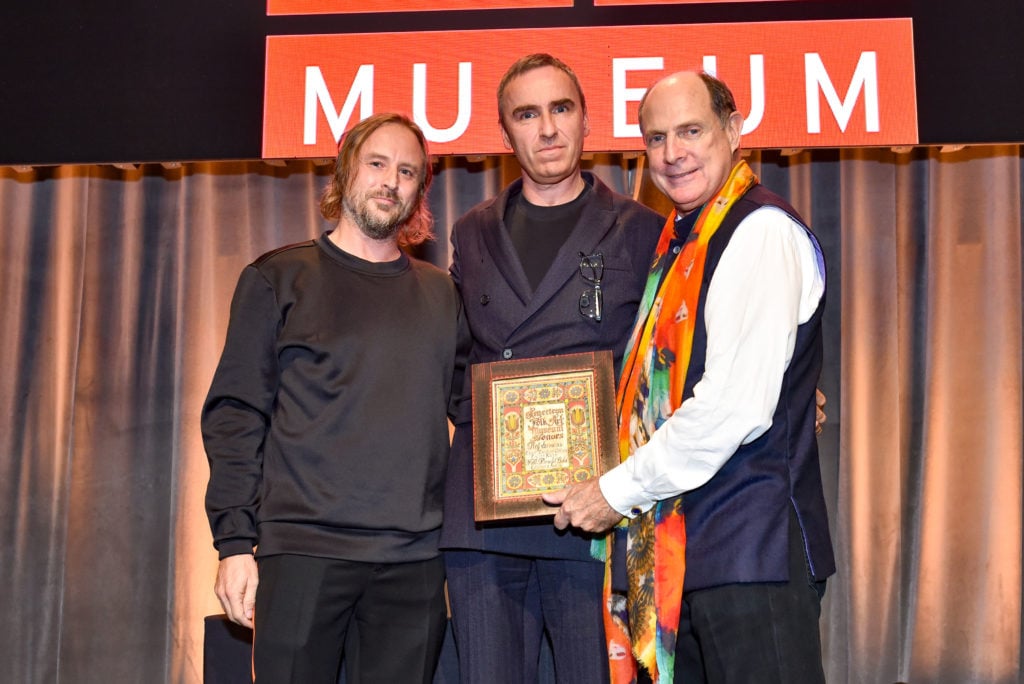
Our columnist on why Sterling Ruby's fashion business isn't as far away from the art business as he'd like to believe.

Tim Schneider

Every Monday morning, artnet News brings you The Gray Market. The column decodes important stories from the previous week—and offers unparalleled insight into the inner workings of the art industry in the process.
This week, asking whether fashion is really the art world’s antidote, and vice versa…
On Monday, the New Yorker published a saga from Christina Binkley about cross-disciplinary-art phenom Sterling Ruby’s journey to produce his first fashion line. Debuted at the prestigious Florentine menswear showcase Pitti Uomo in June, Ruby’s label, S.R. Studio LA. CA., has become an increasingly significant focus of his practice in recent years, in no small part because he sees the runway as a viable course of treatment for the art market’s ills. But the piece highlights again and again that the two industries are already too similarly afflicted for either to cure the other’s most frustrating symptoms.
First, though, the background: Ruby, who began designing and sewing his own clothes as a teenager, has spent much of the past two years building up a serious fashion infrastructure at his Vernon, California studio complex. Aside from usurping a “supermarket-size room” on the grounds to serve as its headquarters, S.R. Studio boasts a robust staff including “a general manager, a head of production, two sample-makers, and several consultants,” per Binkley. She also notes near the story’s conclusion that Ruby’s longtime studio director “now spends half his time on the fashion company.”
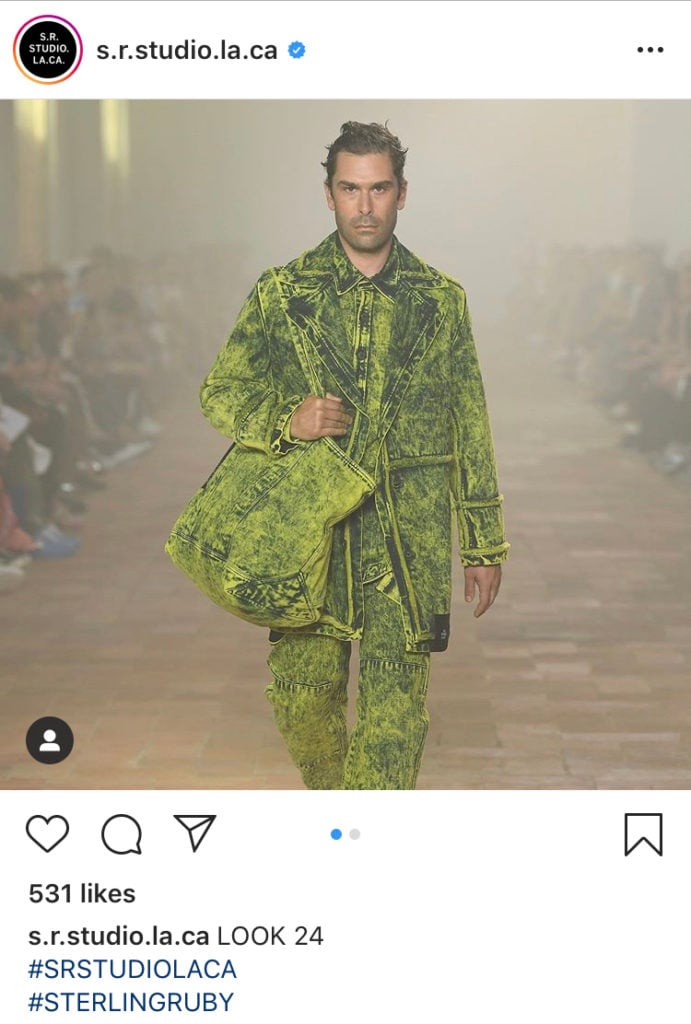
A look from the debut collection from Sterling Ruby’s clothing line, S.R. Studio LA. CA. Photo via Instagram.
Close observers of Ruby’s work know that he has been steadily marching toward this inflection point for years. His collage-paintings have often incorporated fabric scraps. He sometimes ornaments his sculptures and installations with dyed yarn, and his “soft sculptures” are essentially enormous, gleefully demented plush toys. He has also assembled a rich working history with couture designer and former fashion-house creative director Raf Simons, who has commissioned Ruby to design runway backdrops, interiors for his own boutique and the Calvin Klein flagship store, and, in 2014, even a collaborative collection of menswear.
As Binkley notes, plenty of artists have dabbled with the runway over the years, and fashion luminaries such as Helmut Lang—now an aspiring sculptor after retiring from his revered label in 2005—have tried to permanently cross over in the opposite direction. Still, Ruby’s S.R. Studio endeavor counts as the first time a significant visual artist has birthed an entire fashion line, let alone one taken seriously by the Devil Wears Prada set.
Personally, I support Ruby’s commitment to branching out. I’m just skeptical that couture solves the larger economic and philosophical problems disillusioning him about the contemporary-art world.
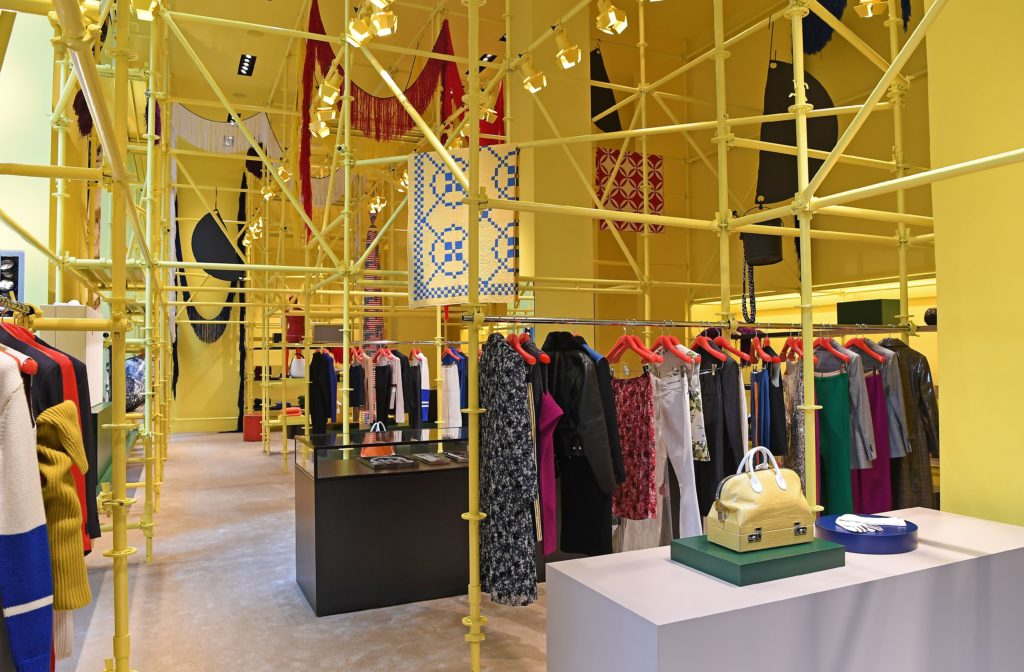
Interior view of the 2017 redesign of the Calvin Klein Store on Madison Avenue, featuring a floor-to-ceiling installation by Sterling Ruby and the debut of Raf Simons Fall 2017 collection. Photography by ANGELA WEISS/AFP/Getty Images.
At multiple points in the piece, Ruby stresses that his apparel line is an expansion of his gallery-and-museum mandate, not an attempt to opt out of it. Yet the clothes aren’t just about aesthetics or creative adventure for him. Here’s Binkley relaying Ruby’s ideological hopes for S.R. Studio:
He’d told me that one of the reasons he wanted to branch out from art is that he views that world as becoming too commodified. He hoped that producing clothing would be a way of democratizing his work, making it available to a wider audience….
And later:
“I’m restless about art,” [Ruby] told me, during a final model-casting session. “I’m not excited about what art has become, as an industry. I think it’s become very investment-heavy, with people looking at artists like racehorses. I don’t think it’s making artists do better work.”
Setting aside the mention of “democratizing” art—always a trigger for me, and one we’ll come back to soon—I’m super sympathetic to this viewpoint. In the past 20 years, artists have become heavily disincentivized to experiment and/or indulge in extended research and reflection for the sake of advancing their practice. The art market has mutated into a volume business in thrall to strict production cycles. As I put it back in 2014, many gallerists and collectors now “have little interest in going along with artists on a surprising, challenging journey. Commodities are not meant to be challenging. They are meant to be intuitive. The longer it takes to understand them, the harder it is to flip them to the next buyer.”
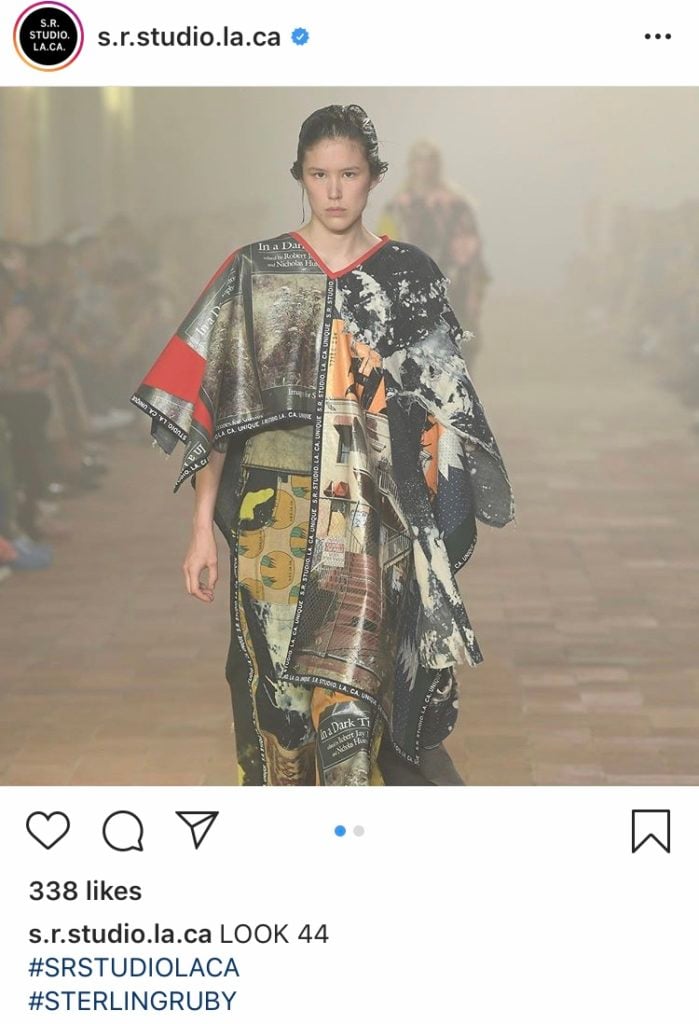
A look from the debut collection from Sterling Ruby’s clothing line, S.R. Studio LA. CA. Photo via Instagram.
So why am I skeptical that the runway will save Ruby or other artists from the hyper-capitalist rat race that is the art industry? Because his confidant Raf Simons seems to be sick of the fashion industry for the exact same reasons! Here’s Binkley again:
Although he continues to design his own menswear line, from Belgium, [Simons] told me that he was having second thoughts about fashion altogether. Rather than produce seasonal collections, he is contemplating showing his designs along with the work of other artists and designers, inspired by the Bauhaus model…. He added that for years he had been thinking of becoming an artist. I asked what was holding him back. “Fear, of course!” he replied.
In other words, Ruby wants to use fashion to short-circuit the hyper-commodified art-world treadmill, and Simons wants to use art to short-circuit the hyper-commodified fashion-world treadmill. (Binkley relays that Ruby, too, “has no interest in churning out collections every three to six months,” preferring instead to “make clothes on his own timetable.”)
To me, this isn’t even like the yin-yang longing of so many married versus single people, where the former envies the latter for the freedoms they enjoy, and the latter envies the former for the love and trust they can rely on. Those jealousies are at least spawned by genuinely inverse scenarios. In contrast, Ruby and Simons have the same complaints about their native domains, and they’re each looking across the fence hoping to find the same answer on the opposite side. Kinda seems like a warning sign, no?
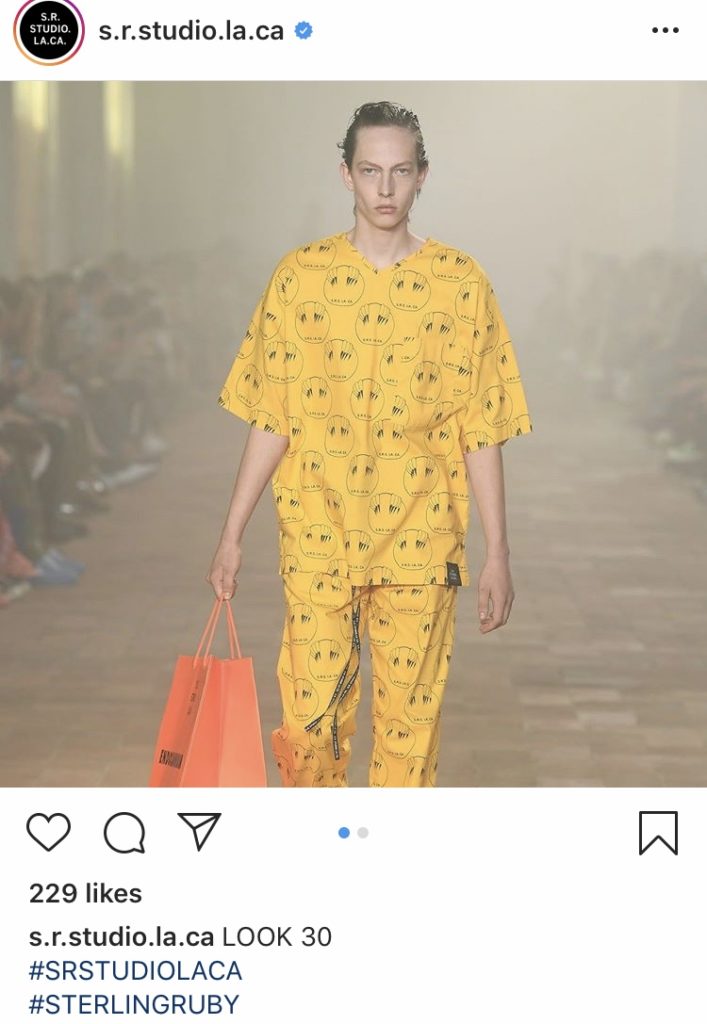
A look from the debut collection from Sterling Ruby’s clothing line, S.R. Studio LA. CA. Photo via Instagram.
If you think I’m just stirring the pot with conjecture, I’m sorry to say that the early financial returns for S.R. Studio put some real meat into this gumbo.
Haunting Ruby’s dreams of connecting with a larger cross-section of the public through fashion is his label’s pricing structure. On the high end of the scale, the inaugural S.R. Studio collection includes a handful of unique, hand-worked pieces costing between $40,000 and $45,000 each. But on the “low” end are ready-to-wear offerings like t-shirts, leggings, and denim… all priced at $400 and up.
Binkley hits the conundrum right between the eyes by writing that Ruby “seemed to think that the buyers of $400 t-shirts would be a different order of consumer from the buyers of million-dollar paintings.” Of course, Ruby’s perception pans out in only the most superficial way, as exemplified by a post-Pitti-Uomo scene in which the teen grandchildren of mega-collectors Don and Mera Rubell all go online to cop S.R. Studio ready-to-wear items.
It turns out that even this prank version of populism—I’m tempted to start referring to it as the “de-mock-ratization of art”—is an exception rather than the rule. Binkley reports that, shortly after the runway show, Ruby’s label “had received inquiries for nearly every one of the eight unique pieces,” including from “several” museums. But the t-shirts and sweatshirts designed for mass consumption “went largely unsold” by the time she finalized her piece, while the more expensive limited-edition garments, such as $2,495 hand-dyed prairie dresses, “sold briskly.”
To sum up, then, the fashion project Ruby embarked on to bring his work to a wider audience at lower prices instead reinforced the strength of the same high-priced scarcity model that helped sour him on the art world in the first place. And given that his friend Simons straight-up told us that he fantasizes about escaping the traditional fashion grind largely to produce less work—or at least produce work less often—and exhibit it alongside that of artists, I don’t think the outcome should have hit anyone with the unexpected force of a falling window air-conditioner.
I applaud Ruby for pushing himself out of his comfort zone with the S.R. Studio line. I agree with his critiques of the high-speed, low-risk 21st century art market. Based on the rhetoric and results in Binkley’s piece, I just don’t think the high-fashion model is the balm for those maladies (even if it’s decoupled from the seasonal cycle). Instead, to find real solutions, we have to follow the lead of Ruby’s runway models, and keep walking.
That’s all for this week. ‘Til next time, remember: the grass isn’t always greener on the other side, but it sure as hell tends to look that way.